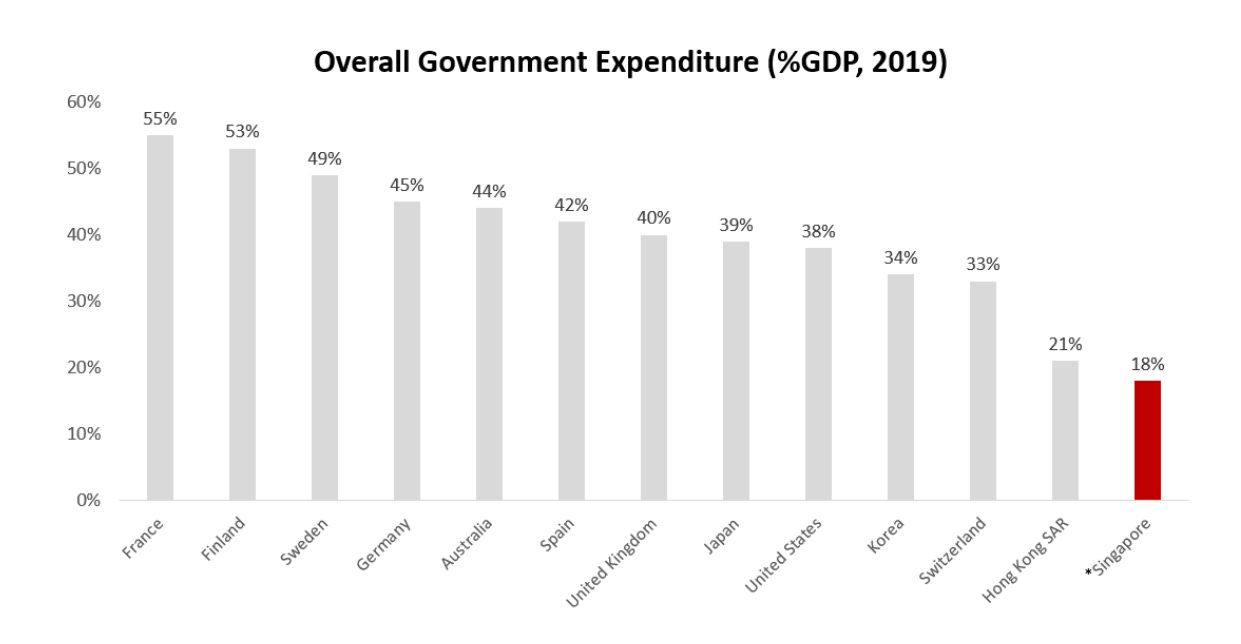June 1949 marked the start of Singapore’s social welfare system, driven by the numerous challenges that surfaced after the Japanese Occupation in World War II. At that time, the social services were mainly targeted towards helping the people manage post-war hardships, such as starvation, lack of a place to stay and income instability. It was nothing permanent, yet it was vital for improving the living standards of the people, and working towards national stability.
The government had prioritized economic growth as a means to achieve national development, building the foundation for what was soon to be an internationally sought-after approach to social welfare. The pragmatic approaches the government had taken, coupled with the rhetoric of self-sufficiency as a nation had rooted the nation’s distinctive welfare philosophy – individual responsibility and self-reliance.
The staunch belief is that a Singaporean’s first lines of welfare should come from one’s individual savings, followed by the family and local community, and only after that, turn to the government. To better put into perspective the level of involvement of the government, the Singapore government only spent about 18% of the country’s Gross Domestic Product (GDP) on social welfare spendings in 2019, whereas countries in Europe such as France, Finland and Sweden spend around half of the country’s GDP on welfare.
(Source: https://www.mof.gov.sg/policies/fiscal)
Central to Singapore's welfare paradigm is self-reliance, present in aspects such as employment, income stability, and community engagement. Singapore’s social compact includes policies such as the Central Provident Fund (CPF), a mandatory social security savings scheme funded by contributions from employers and employees, and SkillsFuture, a platform for Singaporeans to take courses and skills training to constantly upskill themselves to maintain their employability. These initiatives launched by the government encourage individuals to take ownership of their financial planning, welfare provision and career development, thus empowering individuals to build a solid foundation for their future amidst the dynamic and competitive global environment.
On top of individual self-reliance, the notion of community support has also been on the rise. Social empathy and solidarity have been increasingly sought after as the country strives to become more inclusive and bridge the socioeconomic gaps.
“Singapore should not be a welfare state but a welfare society, where everyone takes responsibility for others’ welfare”
- President Tharman Shanmugaratnam
Social support groups in Singapore cater to a wide range of people – they range from offering financial support to critically ill patients, to mental health support and rehabilitation, and even have support groups that cater to specific ethnic groups in Singapore. These support groups strive to act as a lifeline for individuals facing various challenges, and build a strong support network for the vulnerable groups in society.
Singapore’s approach to social welfare, however, is not without its challenges. The country’s strong emphasis on self-reliance and independence may inadvertently perpetuate social inequality, and inhibit collective action. The pressure to succeed in Singapore’s competitive environment fosters a culture of stigmatization around seeking help or support from others. The expectation to be independent and take ownership of one’s own development could potentially lead to isolation and a feeling of alienation, preventing an individual from seeking the support they need.
Furthermore, the individualistic nature of Singapore’s emphasis on self-reliance may undermine community cohesion. When individuals prioritize their own self-reliance above collective interests, the level of commitment to a shared community responsibility wanes. This would lead to the erosion of community solidarity, and weaken the sense of belonging and social cohesion in Singapore.
Overall, Singapore’s approach to social welfare is one that is unique to the rest of the world. While the principles of self-reliance and individual responsibility have contributed largely to the country’s economic growth and national stability, it is crucial to examine its impact on collective action of Singaporeans. As the nation continues to bridge inequalities in society, it is the social welfare construct that ensures that no one is left behind.
Maisharah, Sharifah. Tracing Singapore's Social Sector. (2008). Social Space. 16-22.
Ministry of Finance (n.d.). Fiscal. [online] MOF. Available at: https://www.mof.gov.sg/policies/fiscal.
Ministry of Manpower (2022). What is the Central Provident Fund (CPF). [online] Ministry of Manpower Singapore. Available at: https://www.mom.gov.sg/employment-practices/central-provident-fund/what-is-cpf.
Ministry of Manpower (2022). What is the Central Provident Fund (CPF). [online] Ministry of Manpower Singapore. Available at: https://www.mom.gov.sg/employment-practices/central-provident-fund/what-is-cpf.




